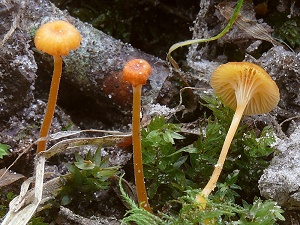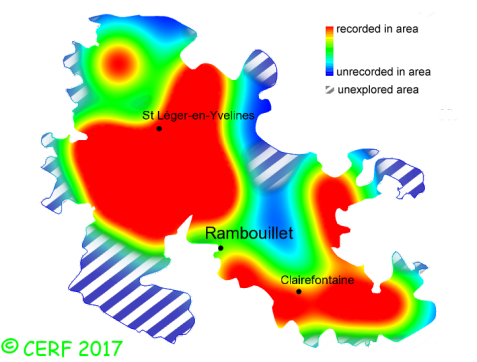| Rickenella fibula (Bull.:Fr.) Raitelh. |
|
|
|
|
|
|
The cap is yellow-orange, fading with age. The cap surface is smooth, not viscid nor sticky. The stem is pale orange, without ring. The flesh is pale orange, unchanging; its taste is mild; the odour is mushroomy; its texture is fibrous. The gills are yellowish-whitish, decurrent, distant . The spore print is white. This species is saprophytic. It grows on the ground, amongst moss or damp short grass of meadows or forests. The fruiting period takes place all year long.
Chemical tests : none. Distinctive features : Very small species, with a very long and thin stem, funnel-shaped striate yellow orange cap and decurrent gills Rickenella fibula is occasional and widely present in the forest of Rambouillet, and is frequent, more generally speaking . | ||
|
page updated on 14/01/18

